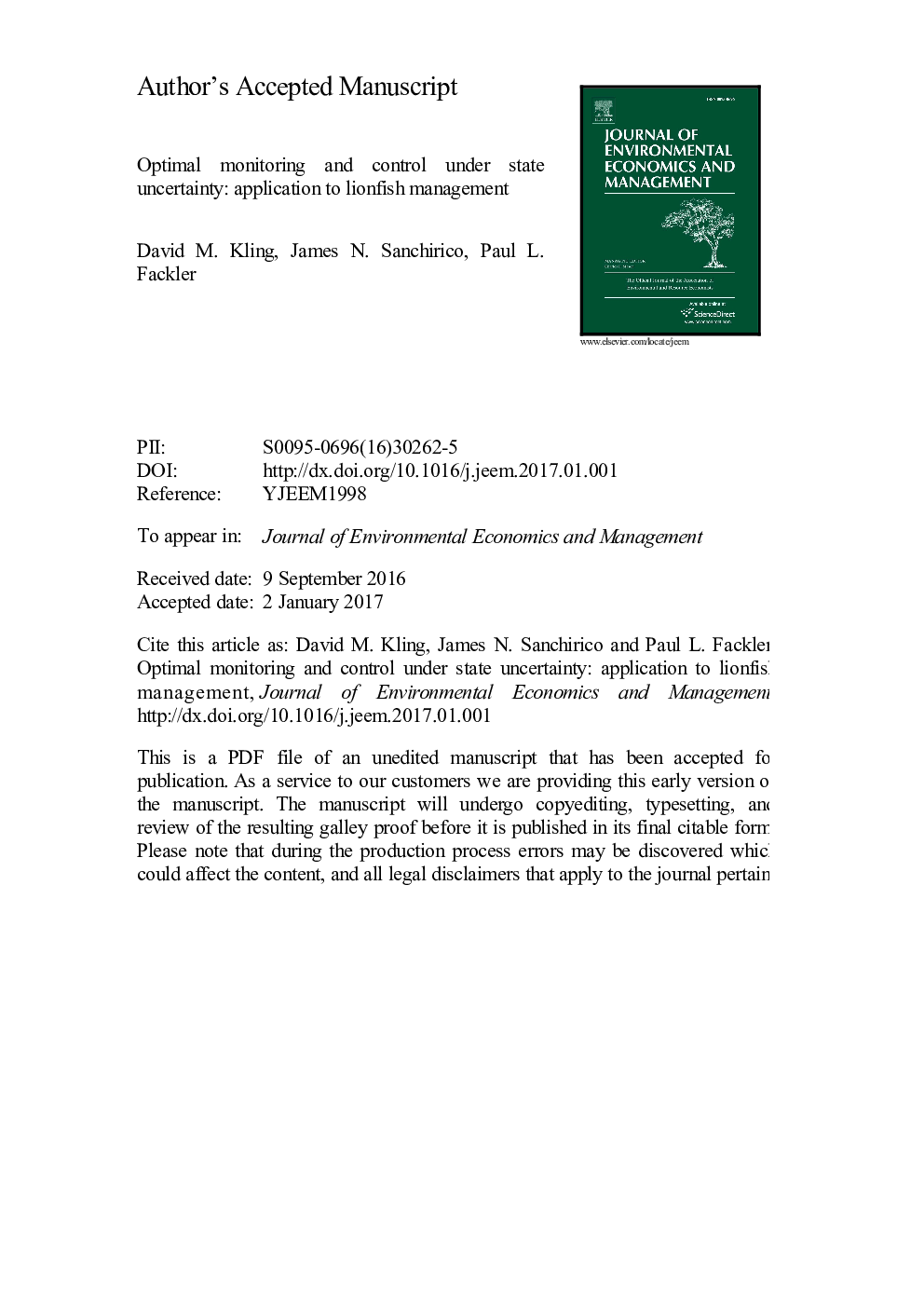| Article ID | Journal | Published Year | Pages | File Type |
|---|---|---|---|---|
| 5100404 | Journal of Environmental Economics and Management | 2017 | 60 Pages |
Abstract
State variables in many renewable resource management problems, such as the abundance of a fish stock, are imperfectly observed over time. In systems characterized by state uncertainty, decision makers often invest in monitoring to learn about the level of a stock. We develop a stochastic bioeconomic model of marine invasive species management under state uncertainty. The decision maker in our model simultaneously evaluates optimal investment in monitoring and population control. Using a recently-devised method for solving continuous-state Partially Observable Markov Decision Processes (POMDPs), we find that the ability to learn through monitoring can alter the role of population control in the optimal policy function, for example by reducing control intensity in favor of monitoring. Optimal monitoring depends on the management context, including in our application lionfish population structure. The rich transient dynamics of our model depend critically on the relationship between the initial conditions for information and invader abundance.
Keywords
Related Topics
Social Sciences and Humanities
Economics, Econometrics and Finance
Economics and Econometrics
Authors
David M. Kling, James N. Sanchirico, Paul L. Fackler,
